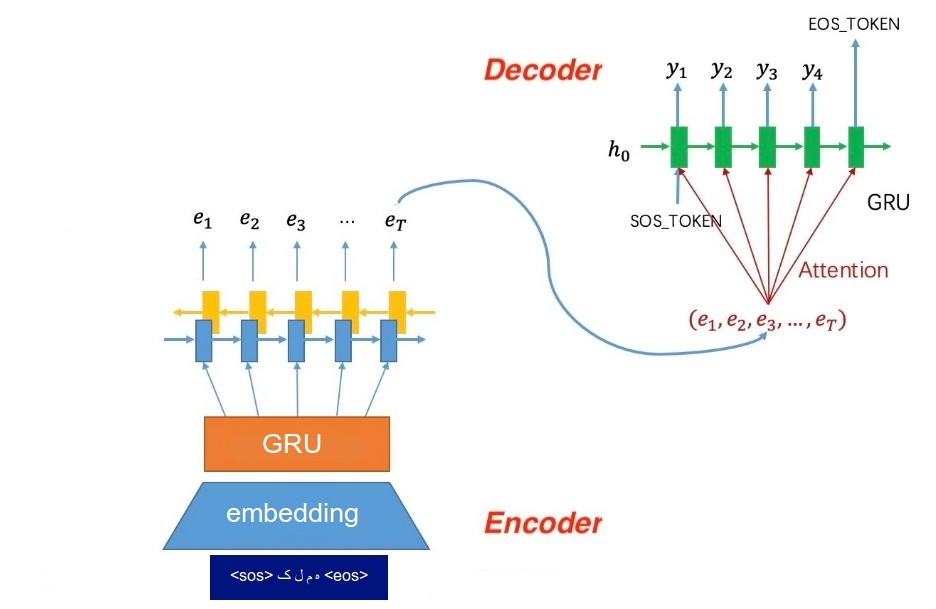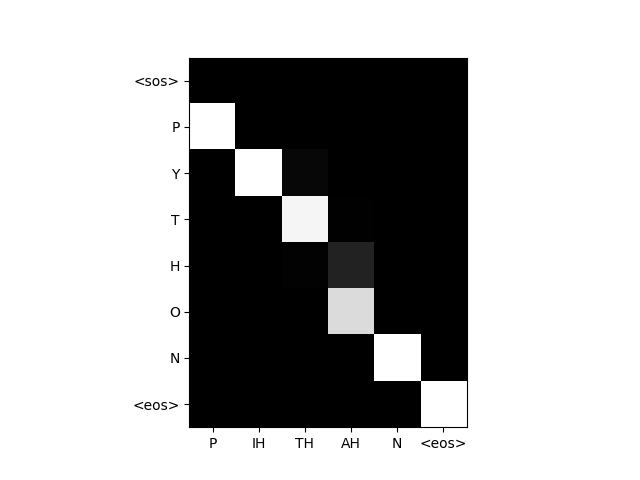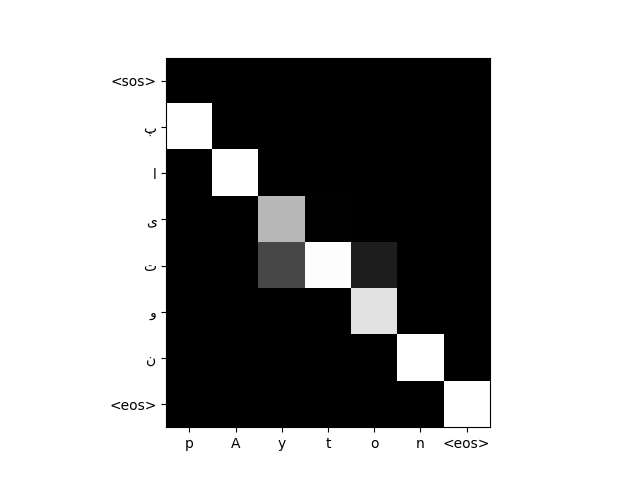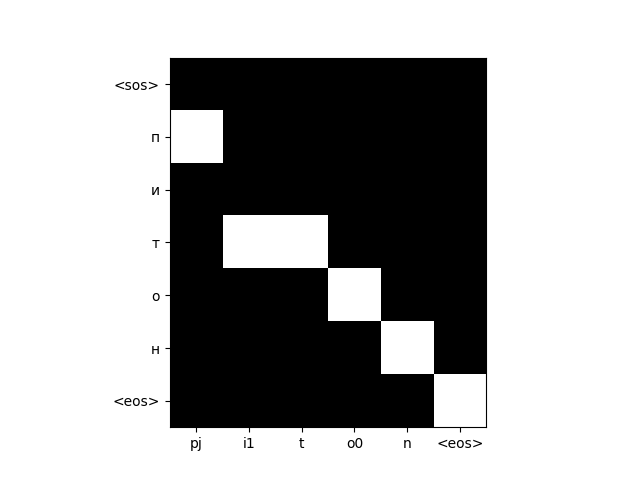G2P
The G2P algorithm is used to generate the most probable pronunciation for a word not contained in the lexicon dictionary. It could be used as a preprocess of text-to-speech system to generate pronunciation for OOV words.
Dependencies
The following libraries are used:
pytorch
tqdm
matplotlib
Install dependencies using pip:
pip3 install -r requirements.txt
Dataset
Currently the following languages are supported:
- EN: English
- FA: Farsi
- RU: Russian
You could easily provide and use your own language specific pronunciatin doctionary for training G2P. More details about data preparation and contribution could be found in resources.
Feel free to provide resources for other languages.
Attention Model
Both encoder-decoder seq2seq model and attention model could handle G2P problem. Here we train attention based model.

The encoder model get sequence of graphemes and produces states at each timestep. Encoder states used during attention decoding. The decoder attends to appropriate encoder state (according to its state) and produces phonemes.
Train
To start training the model run:
LANGUAGE=[EN|FA|RU] python train.py
You can also use tensorboard to check the training loss:
tensorboard --logdir log --bind_all
Training parameters could be found at config.py.
Test
To get pronunciation of a word:
# RU example
python test.py --word питон
u0.d.a0.lj.o1.n.k.a0.<eos>
# EN example
python test.py --word PYTHON
P.IH.TH.AH.N.<eos>
# FA example
python test.py --word پایتون
p.A.y.t.o.n.<eos>
You could also visualize the attention weights, using --visualize:
| EN | FA | RU |
|---|---|---|
 |
 |
 |
Other implementations
Also check Persian_G2P, for encoder-decoder seq2seq model implementation.








